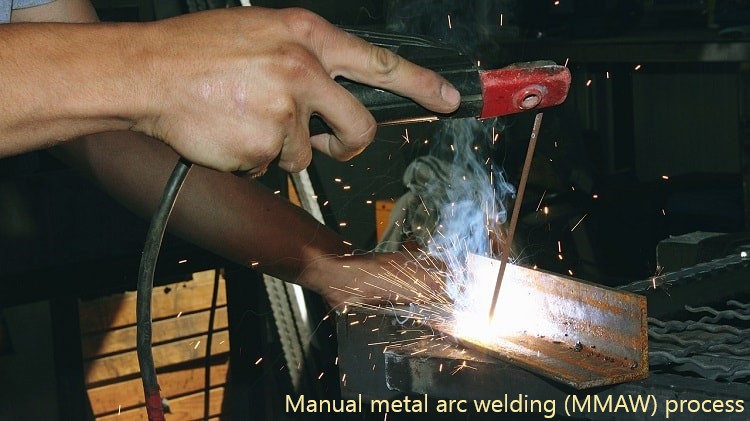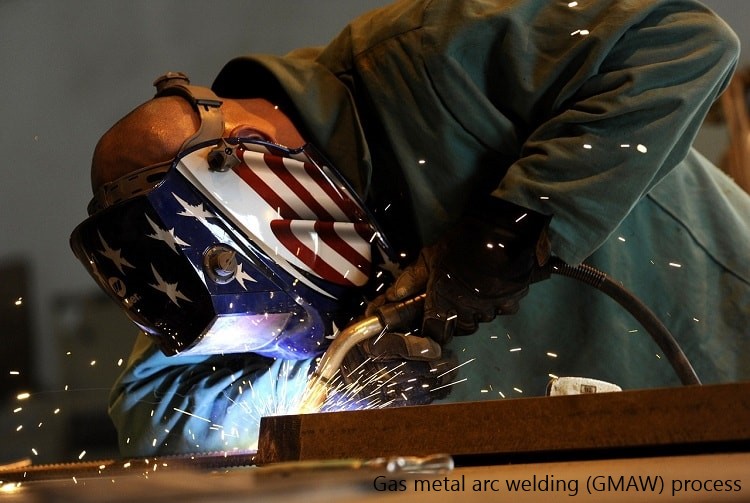Welding, along with fastening, is extensively used for various industrial and household assembly purposes. Welding is one type of joining process by which two or more solid components can be joined permanently by coalescence formation with or without the application of filler metal, heat and pressure. With the development of welding technology, now-a-days it has mostly superseded other permanent joining techniques including riveting. Welding can be applied for efficiently and economically joining metals, plastics, ceramics and composites. If carried out properly with optimum set of parameters, it can produce sound and reliable joints with strength similar to that of parent components. There exist a large number of welding processes, which can be broadly classified as fusion welding and solid state welding.
Fusion welding processes are those where faying surfaces of base metal are fused by applying heat to form coalescence for realization of joining; whereas, no such melting talks place in solid state welding processes. All arc welding, gas welding, resistance welding, and intense energy welding processes are basically fusion processes. In arc welding, an electric arc is constituted in between parent components and electrode by supplying sufficient potential difference in between them. This arc is the prime source of heat (thermal energy) to melt down base plates and filler. Once again there are various arc welding processes; for example, MMAW or SMAW, GMAW (MIG and MAG), GTAW or TIG, SAW, FCAW, ESW, etc. Each of them offer certain benefits over others.

Manual metal arc welding (MMAW), also called shielded metal arc welding (SMAW), is one fusion welding process where electric arc is constituted between a electrode and base plates. This welding is mostly carried out manually and thus the name. The consumable electrode is covered with suitable flux that disintegrates during welding to produce shielding gas and slag layer, which help protecting the arc and molten metal pool from oxidation or contamination. Thus it does not require application of shielding gas separately. Gas metal arc welding (GMAW) is also one fusion welding process where the arc is constituted between consumable electrode and parent components. The electrode, in the form of wire, is continuously fed to the welding zone from a wire spool using a mechanized system and at the same time appropriate shielding gas is supplied from external source to protect the arc and surrounding regions. GMAW is very fast process with high filler deposition rate. Various differences between manual metal arc welding (MMAW) and gas metal arc welding (GMAW) processes are given below in table format.
Table: Differences between MMAW and GMAW welding processes
| Manual Metal Arc Welding | Gas Metal Arc Welding |
|---|---|
| MMAW utilizes a consumable electrode in the form of short small diameter rod. So it is an intermittent process as electrode is required to change at certain interval. | GMAW utilizes a consumable electrode continuously supplied from a wire spool. So no intermittent pause is required to replace electrode. |
| MMAW utilizes flux coated electrode where coating disintegrates to produce shielding gas. No additional gas is applied for shielding purpose. | In GMAW, inert or active shielding gas is supplied at the welding zone. Electrode contains no flux to produce gas. |
| The flux (electrode coating) produces slag on weld bead. This slag can lead to defects or can hamper appearance. Post processing is desired to remove slag. | No flux is associated with this process. So no slag deposition is observed. Thus it eliminates requirement of post processing. |
| MMAW process is highly flexible and can be applied in most locations, in all positions, and for most materials. | GMAW uses more accessories and thus are not suitable for outdoor applications. It cannot be carried out in overhead position also. |
| It is usually carried out by human operator. So joint quality depends on skill of welder. | It can be automated requiring minimum intervention from operator. So it has less tendency of human error. |
Intermittent and continuous process: A small diameter (0.5 – 2.0mm) rod of length 30 – 50cm and coated with suitable flux is used as electrode in manual metal arc welding. Since this electrode is consumable so its length shortens with welding time because of its deposition on weld bead. Thus after certain interval (when flux coated part ended), electrode is required to be replaced by a new one to carry out welding. Thus MMAW requires frequent stoppage and is one intermittent process. On the contrary, a consumable electrode (in the form of wire) is supplied continuously from a wire pool in gas metal arc welding. This wire pool can store sufficient length of wire (it is usually measured by its weight). Thus GMAW can be carried out for longer duration without any pause for electrode changing.

Sources of shielding gas: Shielding gas is indispensably necessary in arc welding processes to protect the arc and molten metal pool from oxidation or other contamination. During arc welding, a thick layer of shielding gas encloses the entire welding zone and restricts atmospheric air to come in contact with weld bead and surrounding hot areas. In MMAW process, the electrode is coated with a flux which disintegrates by the welding heat and produces enough shielding gas to cover up heated areas. So no shielding gas is required to supply additionally. But in GMAW, no such flux coating exists on the electrode. Thus shielding gas is supplied from additional sources (like gas cylinder) using proper delivery pipeline and nozzle.
Slag deposition and its removal: MMAW utilizes a flux coated electrode and this flux actually produces intended shielding gas during welding. Flux also produces slag that deposits at the top surface of weld bead and protects it from contamination. But this slag layer is required to remove after welding is over in order to improve appearance. Usually grinding is adopted for such removal. However, if slag remains trapped within the weld bead and fail to float out at surface then defects like slag inclusion are observed. Such defects can reduce load carrying capacity, joint strength and make it vulnerable under corrosion—all of these ultimately reduce service life. GMAW is free from slag as no flux coated electrode is used. Thus it eliminates defects related to slag and also requirement of post-processing for slag removal.
Productivity: MMAW is not highly productive. In multi-pass welding, slag deposited on weld bead is required to remove completely after every pass so as to avoid slag inclusion defect. Moreover, electrode is required to change frequently. So it is not suitable if high volume of molten metal is required to deposit on weld bead. Thus it is not productive for multi-pass welding. GMAW is free from slag and also no electrode changing is desired. So it can deposit large volume of filler at short period of time. Thus it is perfect choice when root gap is more, edge is prepared in U or V shaped and/or plate thickness is more. Moreover, GMAW electrode diameter is smaller than that for MMAW, which increases arc current density and thus filler deposition rate.
Flexibility of welding: Flexibility indicates ability of a welding process to accommodate various shapes to join in diverse ways in different conditions. Indirectly it refers capability and feasibility to apply a particular process under certain conditions. GMAW requires shielding gas cylinder and pipelines and accessories for its controlled delivery. So it is not suitable for outdoor small scale applications. MMAW can be applied virtually for every location in all positions within the reach of electrode; however, its performance may not be at same level in all scenarios. Even though MMAW is not productive, it is highly flexible and has diverse applications.
Welding quality and dependency on welder: As the name suggests, manual metal arc welding is mostly carried out by human operators. So welding quality relies on the skill and experience of welder. It is also susceptible to human error including random and chance errors. Contrary to this, GMAW can be automated and requires little intervention of welder. So it can provide better quality joints if appropriate parameters are employed.
Scientific comparison among manual metal arc welding (MMAW) and gas metal arc welding (GMAW) processes is presented in this article. The author also suggests you to go through the following references for better understanding of the topic.
- Arc welding processes by magmaweld.com.
- Shielded Metal Arc Welding by W. L. Ballis (2011, Xulon Press).
- Gas Metal Arc Welding Handbook by W. H. Minnick (2007, Goodheart Willcox).

